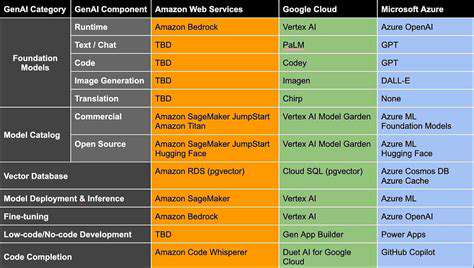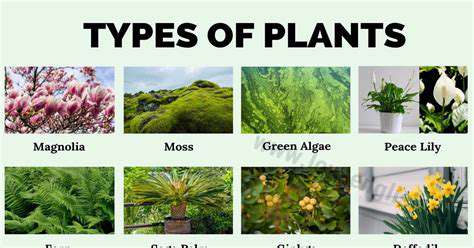Best Strategies for a Successful Job Search
Mastering the Interview Process: From Preparation to Follow-up
Understanding the Interview Landscape
Today's job interviews demand more than just polished answers to standard questions. Companies now evaluate candidates through multiple lenses - technical competence, problem-solving agility, and cultural alignment. The most prepared candidates don't just study the company website; they immerse themselves in recent press releases, employee reviews, and industry trends. This depth of understanding shows genuine interest and separates serious applicants from casual ones.
Interview formats vary significantly across industries. Tech companies might prioritize whiteboard coding sessions, while creative agencies often prefer portfolio reviews. Recognizing these differences allows candidates to allocate preparation time effectively. For instance, practicing coding challenges takes precedence for software roles, whereas media professionals should perfect their presentation skills.
Crafting a Compelling Resume and Cover Letter
Your application documents serve as your professional handshake. A resume should read like an achievement catalog, not just a job description list. Instead of Managed social media accounts, try Grew Instagram following by 150% in six months through targeted content strategy. This approach demonstrates impact rather than just activity.
Cover letters often make or break applications. The best ones tell a story connecting your past successes to the company's current needs. If applying for a project management role, describe how you rescued a delayed product launch through creative scheduling. These narratives make abstract skills tangible and memorable.
Mastering the Art of Interview Questions
Standard questions like Tell me about yourself deserve custom responses. Create a 90-second professional summary that highlights relevant experience while showing personality. For Why this role? answers, mention specific company projects that excite you. This shows you've done homework beyond reading the job posting.
Technical questions test more than knowledge - they reveal thought processes. When explaining solutions, verbalize your reasoning. Even if you don't reach the perfect answer, demonstrating logical problem-solving impresses interviewers more than silent struggles.
Preparing for Behavioral Questions
The STAR method works best when stories feel authentic, not rehearsed. Choose 5-7 versatile experiences that showcase different strengths. One project might demonstrate leadership during crisis, teamwork under pressure, and creative problem-solving all at once. This preparation prevents scrambling for examples during the interview.
Behavioral questions often probe for weaknesses. When discussing challenges, focus on lessons learned rather than failures. Describe how a missed deadline led to implementing new quality checks, turning a negative into professional growth.
Effective Communication and Body Language
Nonverbal cues often speak louder than words. Mirror the interviewer's energy level while maintaining professional posture. If they lean forward during an interesting point, subtly do the same. This unconscious rapport-building creates connection.
Voice modulation keeps listeners engaged. Lower your pitch slightly when making important points - it conveys authority. Pause briefly before answering complex questions; this shows thoughtfulness rather than hesitation.
Handling Technical Questions (If Applicable)
For technical roles, preparation extends beyond textbook knowledge. Study the company's tech stack through job postings or engineering blogs. If they use specific frameworks, be ready to discuss them. Even demonstrating awareness of their technology choices shows initiative.
When stuck on technical questions, talk through your troubleshooting process. Interviewers often care more about analytical skills than perfect answers. Describing how you'd research the problem or consult documentation can score points.
Follow-up and Next Steps
Post-interview communication requires finesse. Within 24 hours, send personalized thank-you notes to each interviewer. Reference specific discussion points to jog their memory. For example: Our conversation about your upcoming expansion to Asian markets particularly interested me because...
If you don't hear back within the promised timeframe, a single polite follow-up shows continued interest without being pushy. Mention any new relevant achievements since interviewing to keep your candidacy fresh.
There's something undeniably captivating about polished wood finishes. Whether it's the rich, deep glow of mahogany or the subtle sheen of oak, these surfaces have a way of drawing the eye and inviting touch. The secret lies in how light dances across the grain, revealing hidden patterns and textures that make each piece unique. Unlike synthetic materials, wood develops character over time, with its finish acting as both protector and enhancer of its natural beauty.
Leveraging Online Job Boards and Applicant Tracking Systems (ATS): Streamlining Your Application Process
Leveraging Online Job Boards for Enhanced Job Search Strategies
Online job boards offer more than just listings - they're networking goldmines. The savviest users treat profiles as dynamic marketing tools rather than static resumes. Regularly updating skills, adding project samples, and engaging with company posts increases visibility. Many recruiters search these platforms proactively for passive candidates.
Platform specialization matters. Creative professionals thrive on Behance or Dribbble, while engineers should prioritize GitHub and Stack Overflow. Research where your industry's hiring managers spend time online, then establish your presence there.
Crafting Compelling Job Application Materials
ATS optimization requires strategic keyword placement without sacrificing readability. Incorporate exact phrases from the job description naturally throughout your resume. If they seek cross-functional team leadership, use that exact wording where applicable. This helps beat automated filters while keeping documents human-friendly.
Visual hierarchy guides reader attention. Place critical information - relevant job titles, key achievements - in the top third of your resume. Use bold sparingly for maximum impact on important data points like promotion dates or award wins.
Optimizing Your Online Profile for Maximum Visibility
Complete profiles outperform partial ones. Fill all relevant sections, including volunteer work and continuing education. Many recruiters search by skills - list both technical and soft skills using industry-standard terminology. For example, Agile project management beats vague team leadership.
Profile pictures should strike a balance between approachable and professional. A smiling headshot with neutral background works best. Avoid distracting elements like busy patterns or extreme angles that might date quickly.
Utilizing Advanced Search Filters and Features
Boolean search techniques unlock hidden opportunities. Combine terms with AND/OR/NOT to refine results. Searching marketing AND (director OR manager) NOT assistant yields more targeted listings than simple keyword searches.
Set up automated alerts for ideal positions. Most platforms allow saving complex searches that notify you of new matching postings. This proactive approach ensures you're among the first applicants for fresh opportunities.
Networking and Engagement Strategies on Job Boards
Comment thoughtfully on industry discussions to build visibility. Instead of generic Great post! try adding value: Your point about conversion tracking aligns with my experience implementing Google Analytics for e-commerce clients. This demonstrates expertise while staying approachable.
When reaching out to recruiters, personalize connection requests. Mention shared connections or specific roles you're pursuing. Generic invites often get ignored, but tailored messages show genuine interest in their work.
Staying Updated with Industry Trends and Job Market Dynamics
Subscribe to industry-specific newsletters through job platforms. Many offer insights into emerging roles and skills demands. Noticing increasing requests for blockchain experience in finance roles, for example, might prompt timely upskilling.
Salary comparison tools help negotiate better offers. Use platform-provided data to benchmark your expectations against local averages for your experience level. This prevents undervaluing your worth or pricing yourself out of consideration.
Staying Motivated and Adaptable Throughout Your Search
Understanding Your Motivation Drivers
Job searches test resilience, making self-awareness critical. Create a career priorities list ranking factors like flexibility, growth potential, and mission alignment. When discouraged, revisit this list to refocus on what truly matters to you. Temporary setbacks hurt less when viewed through the lens of long-term goals.
Track small wins to maintain momentum. Celebrate every interview secured, new connection made, or skill learned. This positive reinforcement combats the discouragement that comes with inevitable rejections.
Developing a Realistic Job Search Plan
Structure prevents burnout. Dedicate specific hours daily to different search aspects - mornings for applications, afternoons for networking. Treat your search like a job itself, with clear KPIs (applications submitted, informational interviews conducted). This measurable approach provides tangible progress markers.
Diversify your strategy. Allocate time to:- Direct applications- Recruiter outreach- Networking events- Skill developmentBalancing these activities prevents over-reliance on any single method.
Mastering the Art of Networking
Informational interviews unlock unadvertised opportunities. When reaching out, be specific: I'd love 15 minutes to hear about your transition from agency to in-house marketing. This shows respect for their time while allowing natural relationship building.
Follow up with value. After meetings, share an article relevant to their challenges or introduce them to someone in your network who could help them. This reciprocal approach fosters lasting professional relationships.
Adapting to Setbacks and Rejections
Create a rejection log analyzing patterns. Are you struggling with technical rounds? Behavioral questions? Identifying consistent weak spots allows targeted improvement. Sometimes the issue isn't you - if multiple rejections cite cultural fit, reassess the types of companies you're targeting.
Practice self-compassion. Would you judge a friend as harshly for a job rejection? Treat yourself with equal kindness, recognizing that hiring decisions involve countless variables beyond your control.
Leveraging Your Skills and Experience
Repackage existing experience for new roles. A teacher transitioning to corporate training might highlight:- Curriculum development → Content creation- Classroom management → Group facilitation- Parent conferences → Stakeholder communicationThis reframing helps hiring managers see transferable value.
Develop success stories for interviews. For each major skill, prepare a concise example demonstrating its application. Structure these as: Challenge → Action → Result → Relevance to new role. This format ensures comprehensive yet focused responses.
Maintaining a Positive and Proactive Attitude
Create an accomplishments file collecting praise emails, performance reviews, and thank-you notes. Reviewing these during low moments provides tangible evidence of your capabilities and worth.
Continuous learning maintains momentum. Use waiting periods between applications to:- Complete relevant certifications- Attend virtual industry events- Build portfolio projectsThis transforms passive waiting into active career development.




![How to Learn a New Language Fast [Proven Methods]](/static/images/31/2025-05/FocusonCommunication3APracticeMakesPerfect.jpg)
![How to Use AI Tools for Studying Effectively [Ethics]](/static/images/31/2025-05/MitigatingPotentialEthicalConcernsAssociatedwithAIStudyTools.jpg)





